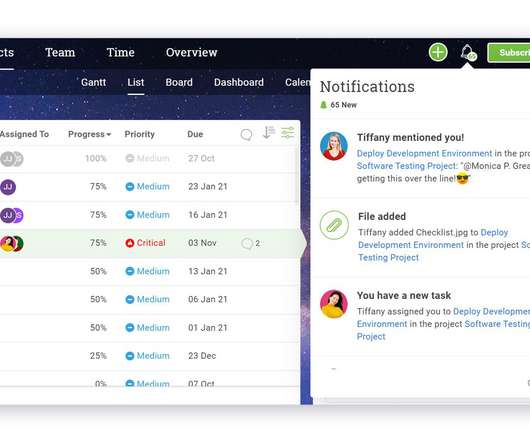Scrum Methodology: Roles, Events & Artifacts
ProjectManager.com
MARCH 4, 2022
The scrum methodology was developed as a response to rigid project management approaches such as the waterfall method, which didn’t adapt to the needs of agile product and software development teams. Scrum is part of agile software development and teams practicing agile. What Is the Scrum Methodology?














Let's personalize your content